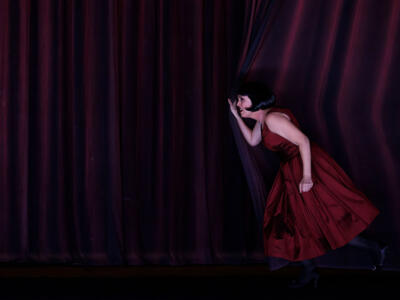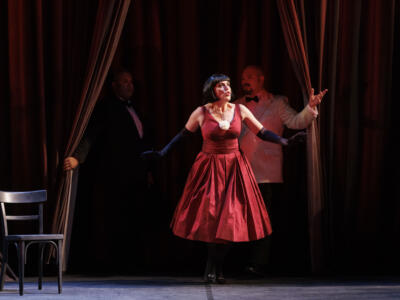La traviata in Pop Culture
What do Moulin Rouge, Pretty Woman, and Verdi’s La traviata have in common? If you love one, you will probably like them all! Few people know that both Pretty Woman and Moulin Rouge use Verdi’s opera as inspiration. Take a look at the similarities between them all and see for yourself…
La traviata is a tragic opera by Verdi
In 1852, Italian composer Giuseppe Verdi visited Paris’s Théâtre du Vaudeville for the world premiere of La Dame aux Camelias. The playwright, and author of the book it was based on, Alexandre Dumas used his affair with courtesan Marie Duplessis as inspiration for the tragic story. One year later, inspired by Dumas’s play, Verdi’s La traviata premiered at the La Fenice opera house in Venice.
Video
In Verdi’s adaptation of the play, Parisian courtesan Violetta is persuaded to leave her ‘glamourous’ lifestyle behind by her admirer Alfredo. Later in the opera, after several months of living together, Alfredo’s father manages to convince Violetta to leave the man she now truly loves, to save his family from shame. Violetta flees back to Paris, having made her ultimate sacrifice, and later dies (in her lover’s arms) from consumption.
In the 1800s, consumption was an incurable disease often associated with beautiful people. This was because consumption – or tuberculosis as we now know it – enhanced features that were related to feminine beauty at the time, such as thinness and pale skin. The prominence of consumption at the time Verdi wrote his opera made it an obvious contender for the way Violetta meets her demise. Puccini thought so too – La bohème‘s Mimì is also dying from the ‘fashionable’ disease.
If you like Moulin Rouge, you’ll love La traviata…
Although director Baz Luhrmann stated Moulin Rouge’s inspiration came from the legend of Orpheus and Eurydice, the ties to La traviata are obvious.
Luhrmann’s leading lady, Satine, like Violetta, is a courtesan and the discreet coughing of blood hints she too is suffering with consumption. As in the opera, Satine is tempted to leave her life as the star of Paris’s Moulin Rouge behind, for a chance at true love with humble writer Christian. Both opera and film have a Duke, who believe they rightfully should be with the heroine over her admirer.
Video
No film based on Verdi’s opera would be complete without a tragic ending. After finally declaring their love for one another, Satine dies in Christians arms, succumbing to the secret disease she’s been battling. Sound familiar? La traviata ends with Violetta dying in Alfredo’s arms, just as his father finally gives his blessing for them to be together.
Thought the plot of La traviata sounded familiar? It was a big influence for Pretty Woman…
A rich man and a courtesan embark on a whirlwind romance before he offers her a new life away from her tumultuous past. No, we’re not still talking about La traviata. This is the basic plot of Pretty Woman, another film that uses Verdi’s opera as its inspiration.
Both Violetta, and Pretty Woman’s Vivienne, spend a great deal of their new lives trying to fit in, challenging the common stigma of their occupation. Vivienne is judged on the way she acts, looks and dresses, but quickly adapts to fit in with societal norms of the 1990s Hollywood elite.
Have you ever wondered which opera Edward and Vivienne go to see together? It’s La traviata! The story of a courtesan and her tragic tale reduces Vivienne to tears. Watch the clip below to hear the famous ‘Sempre Libera’ aria.
Video
Want to see some more ways famous films use opera? Have a read of our opera in film article.
Although both La traviata and Moulin Rouge end in tragedy, Pretty Woman has a happy, fairy-tale ending! Edward and Vivienne initially decide they can never live happily ever after, being from two different worlds, but they soon realise they are now in love and cannot live apart.



